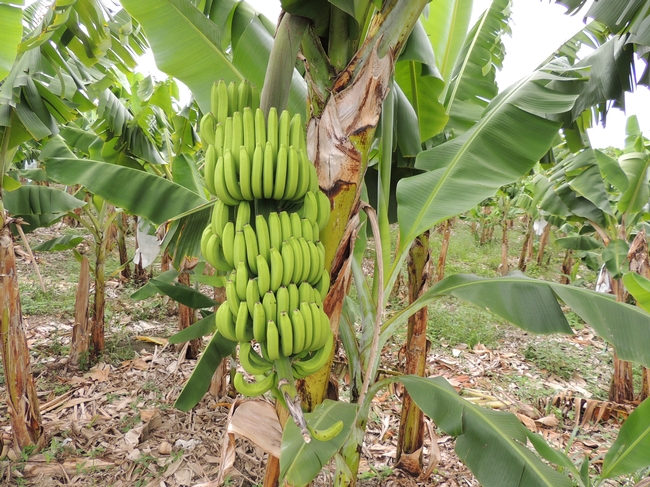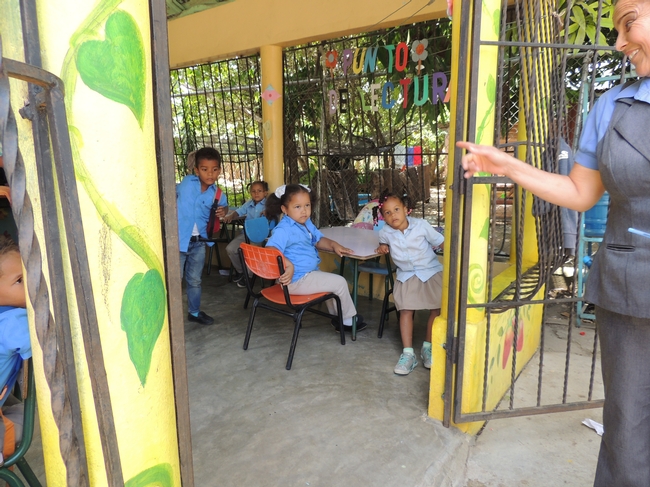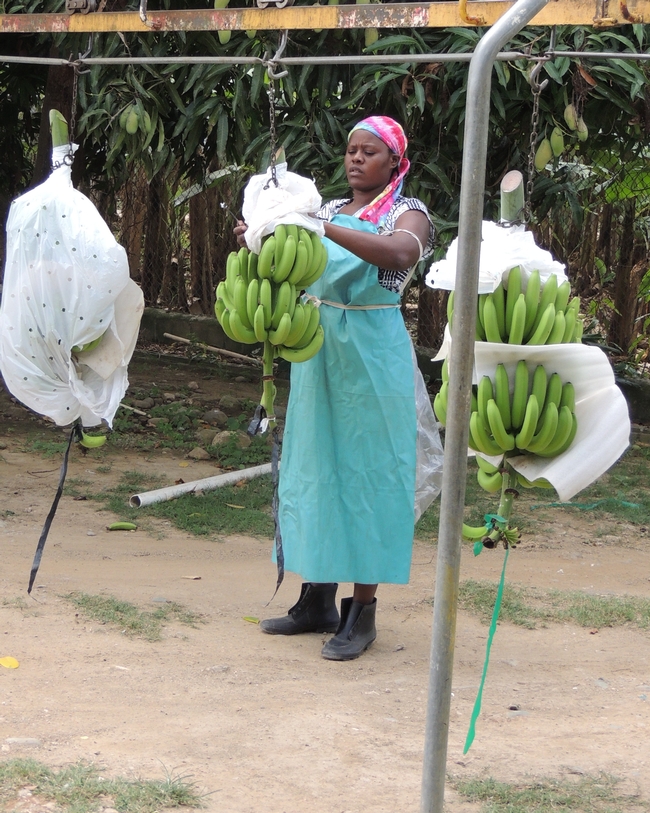Did you know that a banana tree is not really a tree? It's a giant perennial bulb that grows to maturity in less than a year, producing one flower that becomes one huge bunch of bananas. I learned this fact last month from banana growers while visiting the home of organic bananas, the Dominican Republic.
I was invited by a US AID Farmer-to-Farmer project to spend a couple of weeks as a volunteer in the Dominican Republic, primarily to work with the Banelino Banana Cooperative. Banelino is a banana production and exporting company comprised of approximately 320 mostly small-scale banana producers in the northwest section of the country, near the border with Haiti. All producers are certified, or seeking, organic, fair trade, or Global Gap certifications.
Eighty percent of the bananas grown by Banelino are certified organic, and most of them are fair trade certified. The primary export destination for Dominican Republic organic bananas is Europe.
The growers have been impacted by climate change problems, including strong winds, more frequent and intense droughts and record high temperatures. My assignment, based on my work as UC Cooperative Extension Agritourism Coordinator, was to help Banelino assess the potential for successful agritourism development to diversify their income and carry them through hard times.
Like farmers all over the world, the Banelino banana growers have a story to share with visitors. Part of the story is the fascinating revelation of the annual growth cycle of the banana plant; the other part of the story is about the community. I learned the true meaning for the words "fair trade." With the premium, or the added income, that Banelino receives by selling in the fair trade program, the company is able to provide schools, clinics and other social programs for the banana grower and banana worker families. We visited schools and talked with teachers, seeing primary grades classes smaller than most California classes, with children engaged in learning. We visited a school for special needs students, paid for through the Banelino fair trade income, that was so modern and well-equipped it would be the envy of most California special education teachers. It had a colorful art room and a fully equipped, small-scale bakery with mixers and ovens for a training program for the older youth.
Also, like other farmers around the world, Banelino growers have a challenge developing a program to attract paying visitors to tour the farms and learn their stories. They will need to create signs and brochures in multiple languages for their visitors. They will need to work with a local marketing professional to develop a website and social media marketing campaign. They will have to analyze their costs and price their tour so that they don't lose money in the efforts. They will need to connect with the local tourism community and get included in visitor guides and tourism maps. They will need to offer familiarization tours to travel agents, tour leaders and hotel staff to entice them to refer tourists from the all-inclusive beach resorts three hours' drive away. They will have to work with their local hotel association to create an attractive itinerary for visitors to the region - enough attractions to keep guests overnight in hotels - to justify the three-hour drive.
Like farmers everywhere who are considering agritourism, the Banelino banana growers will soon be part of the hospitality industry. They have a wonderful story to share of a hard-working and warm-hearted community. Please look them up if you visit the Dominican Republic.


